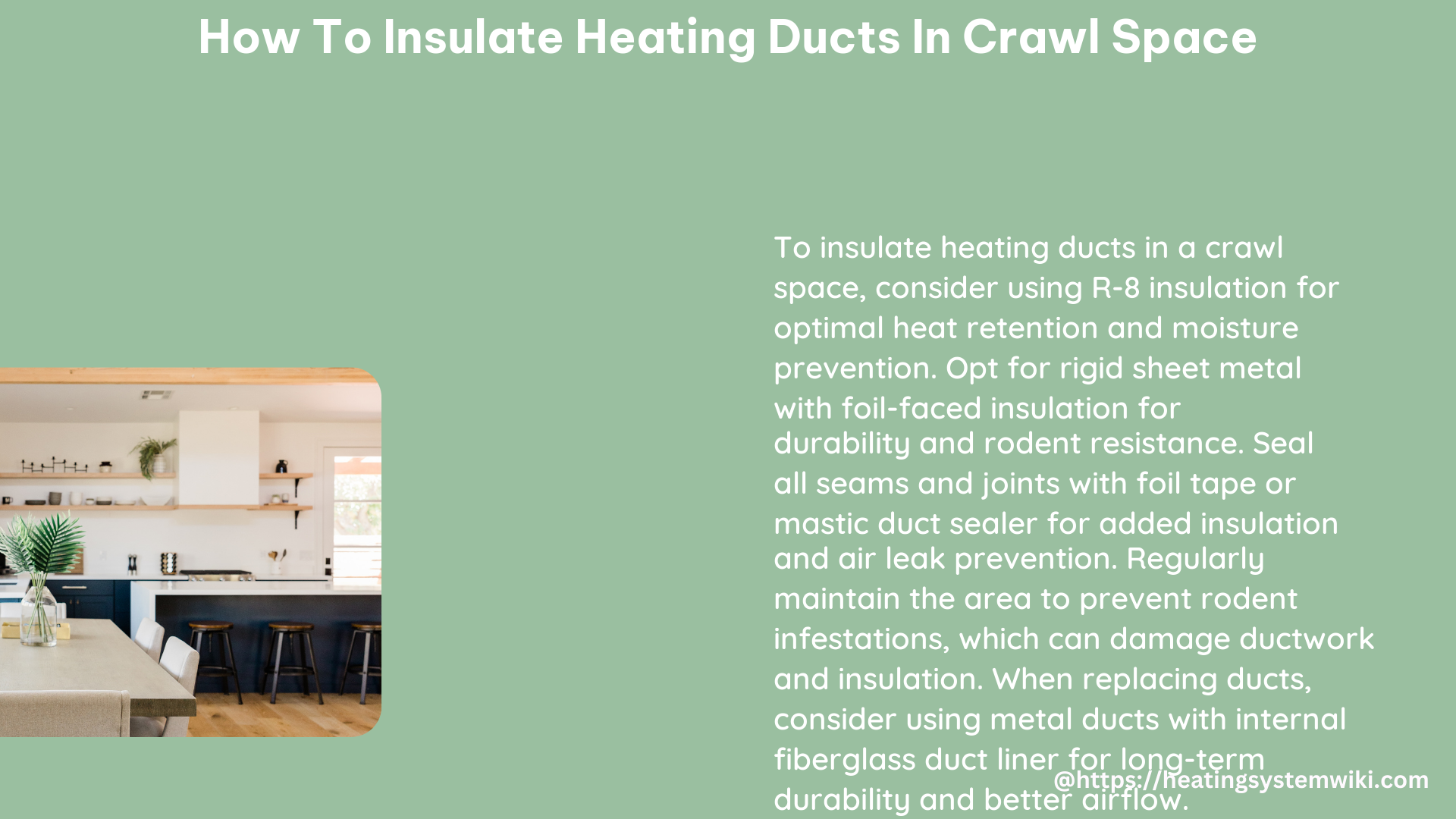Insulating heating ducts in a crawl space is a crucial step in improving energy efficiency, reducing utility bills, and preventing condensation issues. This comprehensive guide will provide you with detailed, step-by-step instructions on how to properly insulate your crawl space ducts, along with the necessary tools, materials, and expert tips to ensure a successful project.
Importance of Insulating Crawl Space Ducts
Insulating heating ducts in a crawl space offers several key benefits:
- Energy Efficiency: Properly insulated ducts minimize heat loss, reducing the energy required to heat your home and lowering your utility bills.
- Condensation Prevention: The insulation and vapor barrier prevent moisture buildup, which can lead to mold, mildew, and other issues in the crawl space.
- Increased Furnace Lifespan: Insulation reduces the load on your furnace, extending its lifespan and reducing the need for costly repairs or replacements.
- Improved Indoor Comfort: Insulated ducts help maintain a more consistent temperature throughout your home, creating a more comfortable living environment.
Preparing the Crawl Space for Duct Insulation

Before you begin the insulation process, it’s essential to prepare the crawl space and ducts properly. Follow these steps:
- Inspect and Seal Air Leaks: Carefully inspect the ducts for any cracks, gaps, or joints that may be allowing air to escape. Seal these leaks using a high-quality caulk or duct sealant to ensure maximum efficiency.
- Clean the Ducts: Remove any dust, debris, or insulation fragments from the ducts to create a clean surface for the new insulation.
- Measure the Duct Dimensions: Accurately measure the circumference of each duct section to determine the appropriate size of insulation needed.
Selecting the Right Insulation Materials
When it comes to insulating heating ducts in a crawl space, the most common and effective option is duct wrap insulation. Look for a product that meets the following specifications:
- R-Value: R-8 or higher is recommended for optimal thermal performance.
- Vapor Barrier: The insulation should have a foil-faced or metalized vapor barrier to prevent condensation.
- Thickness: Typically, 2-inch to 3-inch thick insulation is used for crawl space ducts.
In addition to the duct wrap insulation, you’ll also need the following materials:
- Aluminum Duct Tape: UL181-rated tape to seal the insulation seams and joints.
- Caulk or Sealant: High-quality caulk or duct sealant to plug any air leaks.
- Steel Wire: Used to secure the insulation in place, especially for rectangular ducts.
Insulating Round Ducts
- Measure and Cut the Insulation: Measure the circumference of the duct and add 2 inches to the total. Cut the duct wrap insulation to this length.
- Remove the Fiberglass Strip: Using a utility knife, remove a 2-inch strip of the fiberglass insulation to create an overlapping flap for taping.
- Wrap the Duct: Wrap the duct with the insulation, ensuring the foil vapor barrier is facing outward. Butt the insulation edges together along the bottom of the duct.
- Secure the Insulation: Overlap the 2-inch fiberglass flap and secure it in place with aluminum duct tape.
Insulating Rectangular Ducts
- Remove the Hanging Brackets: One section at a time, remove the hanging brackets or supports to access the entire duct surface.
- Measure and Cut the Insulation: Measure the circumference of the duct and add 2 inches to the total. Cut the duct wrap insulation to this length.
- Remove the Fiberglass Strip: Using a utility knife, remove a 2-inch strip of the fiberglass insulation to create an overlapping flap for taping.
- Wrap the Duct: Wrap the duct with the insulation, ensuring the foil vapor barrier is facing outward. Butt the insulation edges together along the bottom of the duct.
- Secure the Insulation: Overlap the 2-inch fiberglass flap and secure it in place with aluminum duct tape. Use steel wire to further secure the insulation, if necessary.
- Reinstall the Hanging Brackets: Once the insulation is in place, reattach the hanging brackets or supports.
Tips for Effective Duct Insulation
- Overlap Seams: Ensure that all insulation seams are overlapped by at least 2 inches to create a continuous vapor barrier.
- Avoid Compression: Do not compress the insulation, as this can reduce its R-value and effectiveness.
- Seal All Joints: Use high-quality caulk or duct sealant to seal any remaining gaps or joints in the ductwork.
- Consider Spray Foam: For hard-to-reach areas or irregular duct shapes, spray foam insulation can be a viable alternative to duct wrap.
- Maintain Accessibility: Leave enough clearance around the ducts to allow for future maintenance or repairs.
By following these detailed instructions and using the right tools and materials, you can effectively insulate your crawl space heating ducts and enjoy the benefits of improved energy efficiency, reduced utility costs, and a more comfortable living environment.
